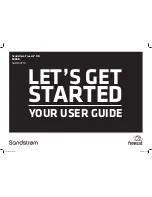
6
1
PANEL DESCRIPTION
#6
AUDIO PEAK FILTER CONTROL [APF
]
(inner control; p. 27)
Varies the peak frequency of the audio peak filter to
pick out a CW signal from interference while the
APF function is ON.
#7
AUDIO PEAK FILTER SWITCH [APF
]
(p. 27)
• Turns the audio peak filter ON and OFF when
pushed.
- The APF indicator appears in the LCD.
- The audio peak filter functions in CW only.
• Toggles the bandwidth of the audio peak filter be-
tween 320, 160 or 80 Hz when pushed for 2 sec.
- Use the [APF] control to vary the peak frequency.
#8
AUTO NOTCH SWITCH [AUTO NOTCH
]
(p. 26)
Turns the auto notch function ON and OFF.
- The auto notch functions in SSB only.
✔
What is the notch function?
The notch function eliminates unwanted CW or AM carrier
tones while preserving the desired signal’s audio re-
sponse. The filtering frequency is adjusted to effectively
eliminate unwanted tones via the DSP circuit.
#9
PASSBAND TUNING CONTROLS [TWIN PBT
]
Adjust the receiver’s “passband width” of the 455
kHz and 9 kHz IF filters for the inner and outer con-
trols, respectively. (p. 25)
- Passband width and center frequency are displayed in
the LCD.
- Set to the center positions when not in use.
- Variable range depends on the filter selection. ± 1.29
kHz in 15 Hz steps and ± 258 kHz in 3 Hz steps are
available.
✔
What is the PBT control?
The PBT function electronically narrows the IF passband
width to reject interference. The PBT is especially effec-
tive in SSB operation and is not available in FM opera-
tion.
$0
LOCK INDICATOR [LOCK] (p. 38)
Lights when the dial lock function is activated.
$1
MEMO PAD-READ SWITCH [MP-R] (p. 46)
Each push calls up a frequency and operating mode
in a memo pad. The 5 (or 10) most recently pro-
grammed frequencies and operating modes can be
recalled, starting from the most recent.
- The memo pad capacity can be expanded from 5 to 10
in set mode for your convenience. (p. 59)
$2
KEYPAD
• Pushing a key selects the operating band.
- [GENE] selects the general coverage band.
• Pushing the same key 2 or 3 times calls up other
stacked frequencies in the band. (p. 23)
- Icom’s triple band stacking register memorizes 3 fre-
quencies in each band.
• After pushing [F-INP
•ENT
], enters a keyed fre-
quency or memory channel. Pushing [
F-INP•
ENT]
or [
Y
]/[
Z
] is necessary at the end. (pgs. 23, 41)
- e.g. to enter 14.195 MHz, push [F-INP
•ENT
] [1] [4] [•]
[1] [9] [5] [
F-INP•
ENT].
$3
MEMO PAD-WRITE SWITCH [MP-W] (p. 46)
Programs the selected readout frequency and op-
erating mode into a memo pad.
- The 5 most recent entries remain in memo pads.
- The transmit frequency is programmed when pushed to-
gether with [XFC].
- The memo pad capacity can be expanded from 5 to 10
in set mode for your convenience. (p. 59)
$4
RECEIVE INDICATOR [RX]
Lights green while receiving a signal and when the
squelch is open.
$5
TRANSMIT INDICATOR [TX]
Lights red while transmitting.
$6
LCD FUNCTION DISPLAY (See p. 9 for details.)
Shows the operating frequency, function switch
menus, spectrum screen, memory channel screen,
set mode settings, etc.
Low cut
High cut
Center
TWIN PBT
TWIN PBT
TWIN PBT
–
+
9 MHz PBT
455 kHz PBT
TWIN PBT
AUTO NOTCH
AUTO NOTCH
Auto notch OFF
Auto notch ON
APF function OFF
APF function ON
APF
APF
Approx. 300 Hz
Approx. 900 Hz
APF
CW PITCH
Lower frequency
Higher frequency










































